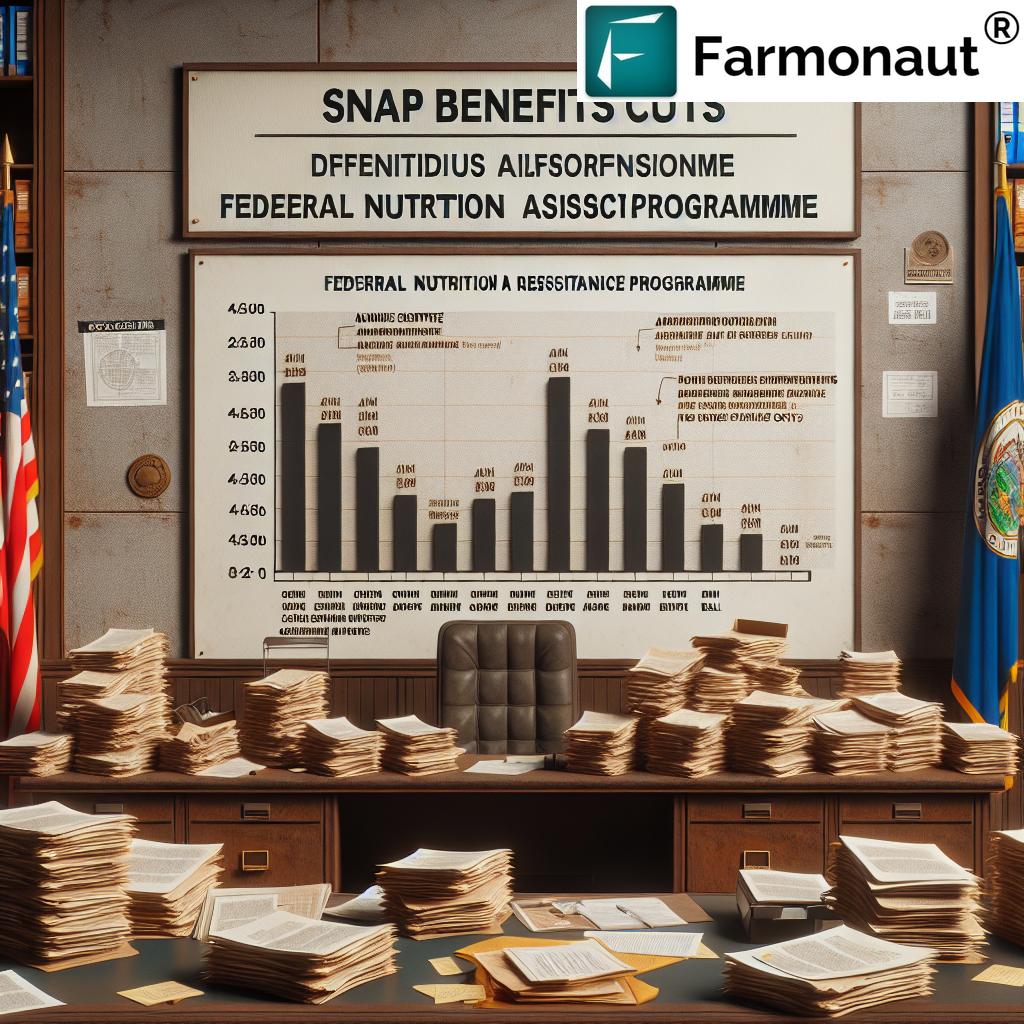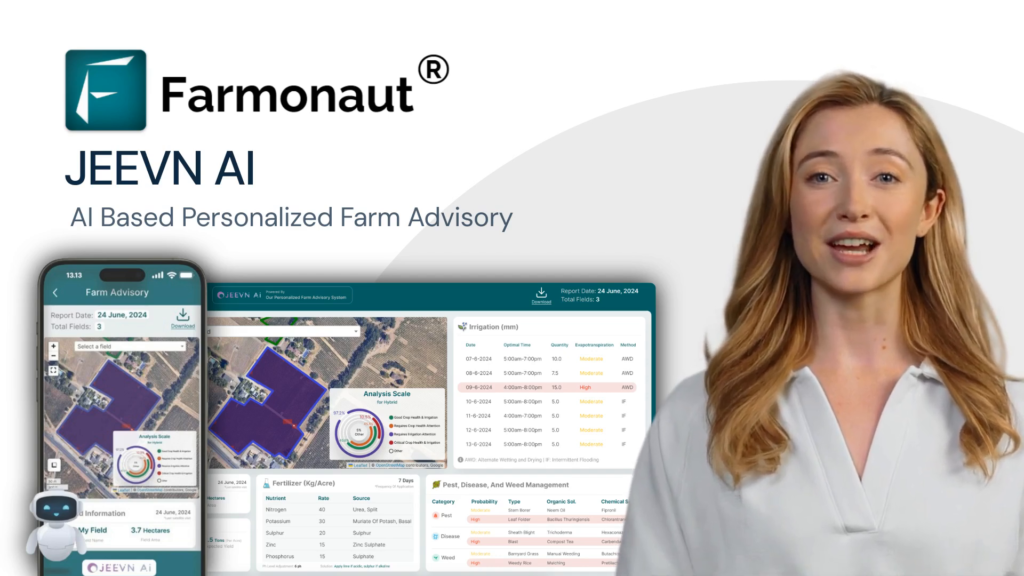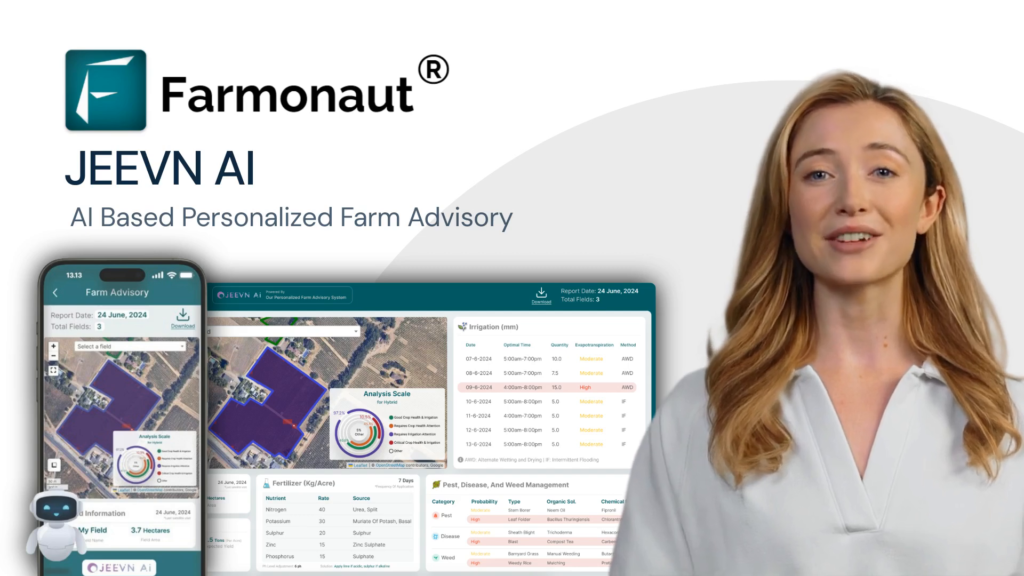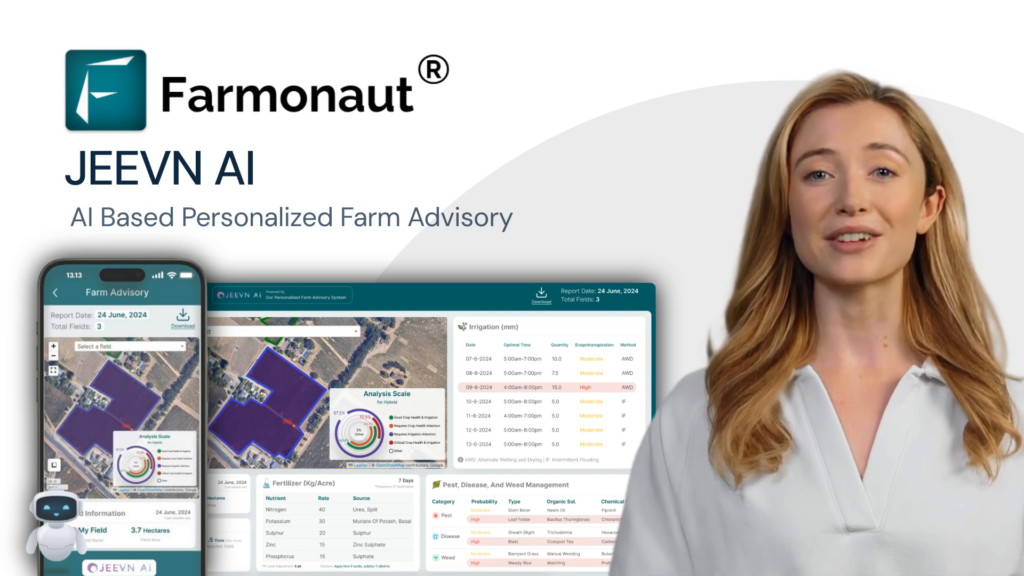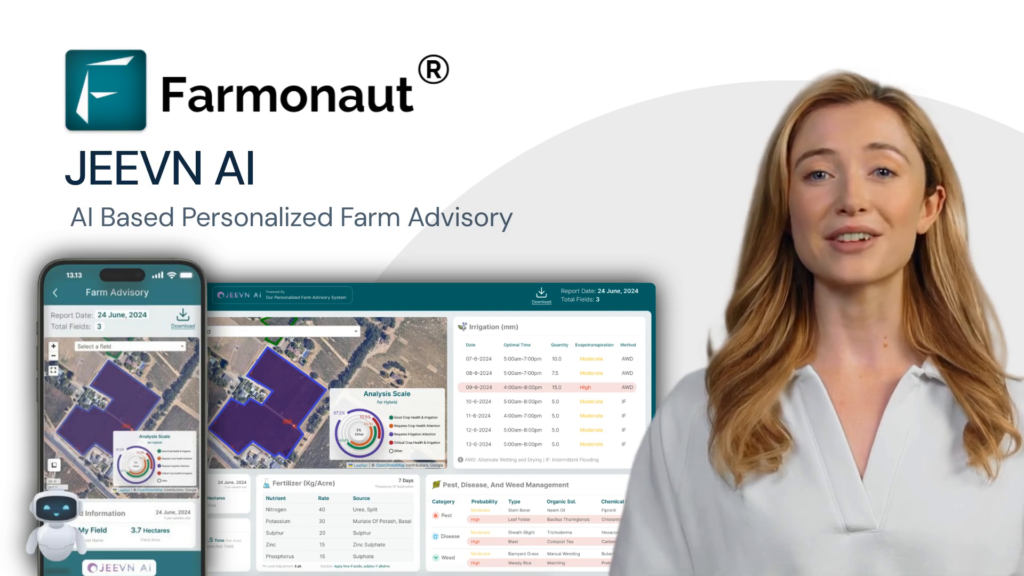SNAP Benefits Cuts: 7 Key Impacts for Washington Households
“Over 500,000 Washington households could see reduced SNAP benefits under proposed federal cuts in 2024.”
- Introduction: SNAP Cuts & Washington’s Federal Food Assistance
- Background: SNAP, Federal Funding, and Legislative Changes
- 7 Key Impacts of SNAP Benefits Cuts in Washington Households
- Comparative Impact Table: SNAP 2023 vs Proposed 2024
- Shifting State Responsibility & New SNAP Eligibility Rules
- Policy, Lawmakers & Committee Debates: The Road Ahead
- How Precision Agriculture Solutions Address Food & Nutrition Insecurity
- FAQ: SNAP Changes, State Impact, Households, and More
- Conclusion: Navigating the Future of SNAP and Washington’s Nutrition Assistance
Introduction: SNAP Cuts & Washington’s Federal Food Assistance
Washington State, long a leader in expanding access to the federal food assistance program (SNAP), finds itself at a crucial crossroads in 2024. Proposed SNAP benefits cuts are poised to reshape how residents receive essential nutrition support, redefining the landscape for low-income households, older adults, and families coping with rising food costs across the region.
Over 20 million American households depend on SNAP (Supplemental Nutrition Assistance Program) for food security. In Washington alone, five hundred thousand households—more than one in seven—rely on this critical safety net each month. National policy debates and the latest congressional SNAP reform bill will transform not just the benefit level, but also SNAP eligibility requirements, state responsibility for SNAP costs, and accountability standards for government spending on food benefits.
In this comprehensive report, we outline the 7 key impacts of these proposed changes, what they mean for Washingtonian families, and how agricultural innovation—such as Farmonaut’s precision farming technology—can be part of a longer-term solution to nutritional insecurity in our communities.
“New eligibility rules may disqualify up to 15% of current SNAP recipients in Washington state.”
Background: SNAP, Federal Funding, and Legislative Changes
Before diving into the anticipated effects of snap benefits cuts, let’s establish why these changes matter.
- SNAP Origin: Once known as ‘food stamps,’ SNAP is the largest federal nutrition assistance program. It is designed as a bridge—a temporary helping hand for American households experiencing crisis or poverty.
- Current Funding Structure: SNAP benefits are entirely funded by the federal government, with states like Washington only handling administrative costs. On average, households in Washington receive $353 per month, allowing them to purchase nearly any grocery food, except alcohol.
- Republican Reform Proposals: The new congressional SNAP reform bill aims to “restore the program’s original intent.” Sponsored by House Agriculture Committee chair Glenn Thompson (R-Pa.), the bill asks states to shoulder part of the SNAP benefit cost, tighten SNAP eligibility requirements, and impose stricter work requirements for adults.
- Policy Debate: Supporters argue these proposed changes to SNAP will fix “bureaucratic inefficiencies” and improve accountability for taxpayer dollars. Critics counter that they will worsen food insecurity and disproportionately harm seniors, people with disabilities, and children in vulnerable households.
With this context, we examine the large-scale implications for Washington state and its communities.
7 Key Impacts of SNAP Benefits Cuts in Washington Households
Let’s explore the tangible outcomes that the SNAP reform effort and accompanying benefits cuts will generate in Washington. We focus on both the immediate repercussions and the potential for a new era in federal food assistance program delivery.
-
1. Reduced Monthly SNAP Benefit Amounts
Under the proposed cuts, SNAP benefits for Washington households could fall below the national average of $353. Since the bill would ban increases beyond inflation, the real value of assistance will stagnate—even as food prices continue to climb.
- Direct Impact: Lower purchasing power for healthy groceries.
- State-wide Effect: More households may face tough choices—paying rent, medical bills, or buying food.
- SEO Tip: This change embodies the impact of snap cuts on households in daily life.
-
2. Stricter Eligibility: Fewer Households Qualifying
The new eligibility rules—one of the standout proposed changes to SNAP—would disqualify up to 15% of current Washington state recipients. Rules are designed to cut off access for “able-bodied” adults in their late fifties and early sixties who do not meet stricter work or training requirements.
- Direct Impact: Seniors, low-income workers, and those on the margins may lose benefits entirely.
- Ripple Effect: Increased demand for state or local emergency food resources.
- Example: A 59-year-old without dependents must now demonstrate employment, even if they live in an area with few jobs.
-
3. State Responsibility for SNAP Costs: A New Fiscal Burden
For the first time, Washington and other state governments must contribute to SNAP’s cost. Starting in 2028, states will fund at least 5% of all benefits paid out, with higher percentages required from states with elevated “erroneous payment” rates.
- Direct Impact: Washington’s state budget may be squeezed, forcing cuts or trade-offs in other social programs.
- Bureaucratic Implications: Local agencies may need to downsize, streamline systems, or seek new revenue.
- Policy Debate: Supporters see this as incentivizing efficient administration. Detractors see it as an unsustainable burden that threatens food security for families statewide.
-
4. Increased Administrative Complexity & Delays
Shifting costs and stricter eligibility mean Washington’s administrative apparatus becomes more complex. State agencies may need to handle more paperwork, verification, and appeals—with less federal support.
- Result: Longer wait times for applications, more red tape, potential for overwhelmed staff.
- Household Effect: Applicants may experience delayed benefits or face bureaucratic roadblocks to urgently needed food assistance.
- SEO Note: A prime example of “bureaucratic inefficiencies.”
-
5. At-Risk Populations: Seniors, Children, and Disabled Households Lose Out
The House Agriculture Committee bill brings “one size fits all” changes. But disproportionate harm is likely for:
- Older Adults (55+): Rapidly stricter work requirements for adults will hit those with limited employment options.
- People with Disabilities: May fall through cracks with heightened proof requirements or administrative errors.
- Children & Veterans: Households with vulnerable members will lose partial or total benefit support.
House Democrats’ projections warn that over $230 billion in SNAP spending reductions will “take food away from seniors, children, veterans and people with disabilities when costs are already too high.”
-
6. Declining Nutritional Quality & Food Security
Without regular increases, SNAP might lag behind real-world food price inflation. This soon leads to:
- Reduced ability to purchase fresh produce, dairy, healthy proteins—compromising household nutrition levels.
- More reliance on food pantries, processed foods, or skipping meals—especially among children.
- Higher projected rates of food insecurity and hunger-related health challenges across the state.
-
7. Long-Term Pressure on Washington’s Food Support Ecosystem
With state and local agencies forced to fill funding gaps, and more families ineligible for benefits, we anticipate:
- Increased demand for food banks and charitable organizations.
- New efforts to coordinate local food relief and nutrition education programs outside SNAP.
- Pressure on the legislature to innovate with agricultural technology and policy—such as precision farming data, carbon footprinting, and food traceability offered by Farmonaut.
Comparative Impact Table: SNAP 2023 vs. Proposed 2024
A side-by-side summary of how key indicators might chance under the pending SNAP reform bill—enabling rapid comprehension of the impact of snap cuts on households in Washington.
| Impact Category | Current Benefit Policy (2023 Estimated Value) |
Proposed Cuts (2024 Estimated Value) |
Estimated Change/Effect per Household |
|---|---|---|---|
| Monthly Benefit Amount | $353 | $320–$340 (No increases beyond inflation) |
Lower purchasing power; possible $13–$33/mo loss |
| Eligible Households | 510,000+ | 430,000–440,000 (up to 15% fewer) |
Tens of thousands lose eligibility |
| Administrative Costs Shifted to State | Federal pays 100% of benefits State handles admin only |
States must cover 5%+ of benefit cost | WA state budget burden increases by tens of millions/year |
| Application Processing Time | 2–4 weeks (average) | 3–6 weeks (projected) | More red tape, longer waits |
| Nutritional Quality Level | Moderate–High | Moderate–Low (due to declining real value) |
Less healthy eating, higher food insecurity |
| At-Risk Demographics | Senior, Disabled, Children, Veterans included | Seniors, many adults, potentially cut/nullified |
Most vulnerable face benefit loss |
| Projected Food Insecurity Rate | 9–11% | 11–13% (projected) | Thousands more facing hunger |
Shifting State Responsibility & New SNAP Eligibility Rules
The heart of the debate is this: Should Washington and other states become more responsible for funding the nutrition assistance program policy that shapes residents’ economic security and health? This legislative shift will redefine the state’s fiscal priorities and administrative strategies.
- Cost-Sharing: Beginning in 2028, the bill mandates that state governments cover at least 5%—often more—of their households’ SNAP benefits. This cost-sharing provision comes as state budgets are already stretched by healthcare, housing, and education.
- Administrative Incentives: If a state (like Washington) has a higher “improper payments” rate, it pays a larger share. This policy is designed to incentivize better administration, but can also be seen as shifting risk from federal to state budgets.
- Eligibility Restrictions: New SNAP eligibility requirements:
- Expands work requirements (now applies to able-bodied adults up to 60 years old)
- Closes “loopholes” used by states to enroll more households
- Tightens asset and income verification
- Lowers the number of temporary waivers and exemptions
- Permanent Policy Changes: Eliminates future benefit increases beyond inflation, effectively ending the Biden-era permanent extension of expanded benefits.
These intentional changes reflect competing national priorities: fiscal accountability, taxpayer protection, cutting government spending on food benefits versus food security, and support for the poor and at-risk.
Policy, Lawmakers & Committee Debates: The Road Ahead
The House Agriculture Committee, guided by Chair Glenn Thompson, frames the SNAP reform as necessary, promising enhanced accountability and efficiency. “This portion of the One Big, Beautiful Bill restores the program’s original intent, offering a temporary helping hand while encouraging work, cracking down on loopholes exploited by states, and protecting taxpayer dollars while supporting the hardworking men and women of American agriculture,” Thompson said in the latest release.
The proposed snap benefits cuts are just one part of a much broader package, the so-called “One Big, Beautiful Bill,” which includes tax cuts and other major changes to social programs such as Medicaid. Senate and House committees will vote on these sections this week, and then “stitch together” the overall package for a full vote.
- Opponents, including committee Democrats, argue these moves amount to $230 billion in nutrition support reductions at a time when food prices and household costs are historically high. “It will take food away from seniors, children, veterans and people with disabilities when costs are already too high,” Rep. Angie Craig (D-Minn.) noted.
- The fight is more than political: it’s about defining America’s support systems. The outcome will have a profound effect on the makeup of domestic policy and could set new standards for nutrition assistance program policy going forward.
- Farm-state lawmakers have historically helped shield SNAP from deep cuts, by pairing it with agriculture subsidies. This time, the linkage is to tax reform and deficit reductions—upending decades of bipartisan, farm-focused support for SNAP.
How Precision Agriculture Solutions Address Food & Nutrition Insecurity
As the future of the federal food assistance program becomes increasingly uncertain, there is growing pressure to find innovative and sustainable strategies to support nutrition and food security. That’s where advanced agricultural technology—like Farmonaut’s satellite-powered platform—can make a difference in both policy and on-the-ground impact.
Farmonaut’s Role in Supporting Nutrition Access and System Efficiency
-
Satellite Crop Monitoring: Farmonaut empowers Washington’s farmers to increase crop yields and reduce resource wastage. By providing real-time data on vegetation health, soil moisture, and more, it supports optimal use of limited resources—even as SNAP benefits decline and food prices rise.
See how this works for large-scale farm management. - AI-Based Advisory (Jeevn System): AI-driven recommendations provide precision-use suggestions for fertilizers, irrigation, and pest management. Smarter farming can mean more affordable, plentiful produce—fighting food insecurity at the source.
- Blockchain-Based Traceability: Ensures traceability of food products from farm to table. Consumers gain trust in food origin (especially local products); agencies can better target nutrition assistance where it’s most needed.
- Fleet Management Tools: Optimal fleet management for farm and food logistics means less waste and greater efficiency in food delivery—even for non-profit or government nutrition programs.
- Environmental Sustainability: Farmonaut’s carbon footprinting helps meet growing state and local mandates for sustainable agriculture, reducing the climate impact of food production.
- Financial Support & Verification: Accurate satellite-based crop monitoring supports crop loans and insurance, helping more producers enter and thrive in food markets.
By leveraging satellite and AI-based technology, Farmonaut addresses not just efficiency but transparency and targeted solutions—essential for sustaining nutrition-support policies when government spending on food benefits faces sharp reductions.
For developers or institutional users, Farmonaut’s API (access here) and robust developer documentation enable deep integration of real-time agronomic insights.
FAQ: SNAP Benefit Cuts, State Impact & Policy Changes
Q: Who will be most affected by SNAP benefit cuts in Washington?
A: The largest groups impacted are low-income seniors (ages 55–64), adults without dependents, people with disabilities (especially in cases with administrative or documentation challenges), and working poor families. Many children in mixed-status or multi-generational households may also lose access or face reduced benefits.
Q: How will the new SNAP eligibility requirements change access?
A: Eligibility rules will be stricter, with more emphasis on work requirements, income and asset verification, and fewer waivers for “able-bodied” adults. An estimated 15% of current recipients could become ineligible in Washington when the new criteria are enforced.
Q: What does “state responsibility for SNAP costs” mean for Washington?
A: Washington state will shift from only handling administrative costs to paying at least 5%—possibly more—of total SNAP benefit expenses. This will require higher state budget allocations, impacting other public services.
Q: Will the nutritional quality of SNAP-funded groceries decline?
A: Likely yes, as the real value of SNAP does not keep up with inflation, recipients might buy cheaper, less nutritious food, leading to higher rates of food insecurity and health issues.
Q: What can organizations do to adapt to these changes?
A: Government and private organizations can improve hunger relief through collaboration, embracing innovative technology (like Farmonaut’s digital resource management tools), and targeting support to the most at-risk groups.
Conclusion: Navigating the Future of SNAP and Washington’s Nutrition Assistance
The pending SNAP benefits cuts underscore a major turning point for Washington’s low-income households, policymakers, and food security advocates. As state government prepares to absorb new funding and administrative burdens, while striving to meet the changing demands of eligibility and accountability, it is clear that the federal food assistance program is entering a new era—one marked by deep fiscal constraints and policy transformation.
Our collective path forward demands more than just political negotiation. It requires the strategic application of agricultural technology to increase local food supply, reduce costs, and ensure traceability—steps pioneered by Farmonaut and like-minded innovators determined to make sustainable agriculture a driver of food security, even as the traditional safety net is redefined.
For everyone invested in the health, dignity, and well-being of Washington families, this is a moment to engage, inform, and act—whether through civic participation, supporting local food programs, or leveraging the latest digital tools to tackle food insecurity at its root.
Together, we can build a resilient food ecosystem—one that adapts to changing policies and priorities, and puts nutrition and health at the center of our shared future.


